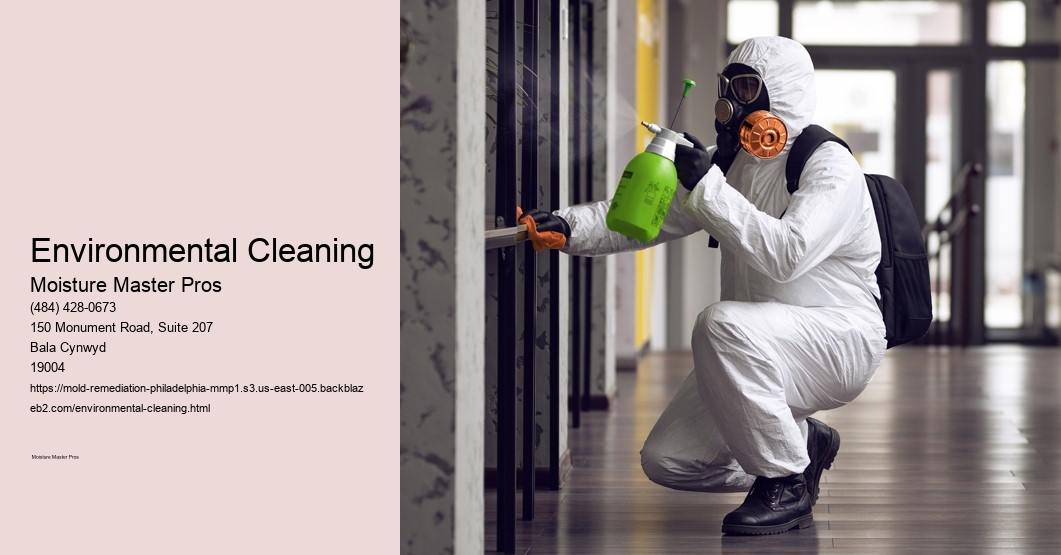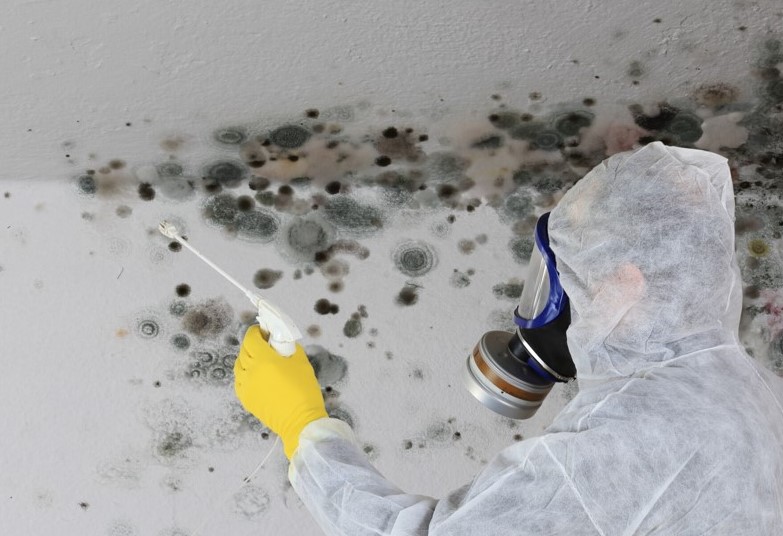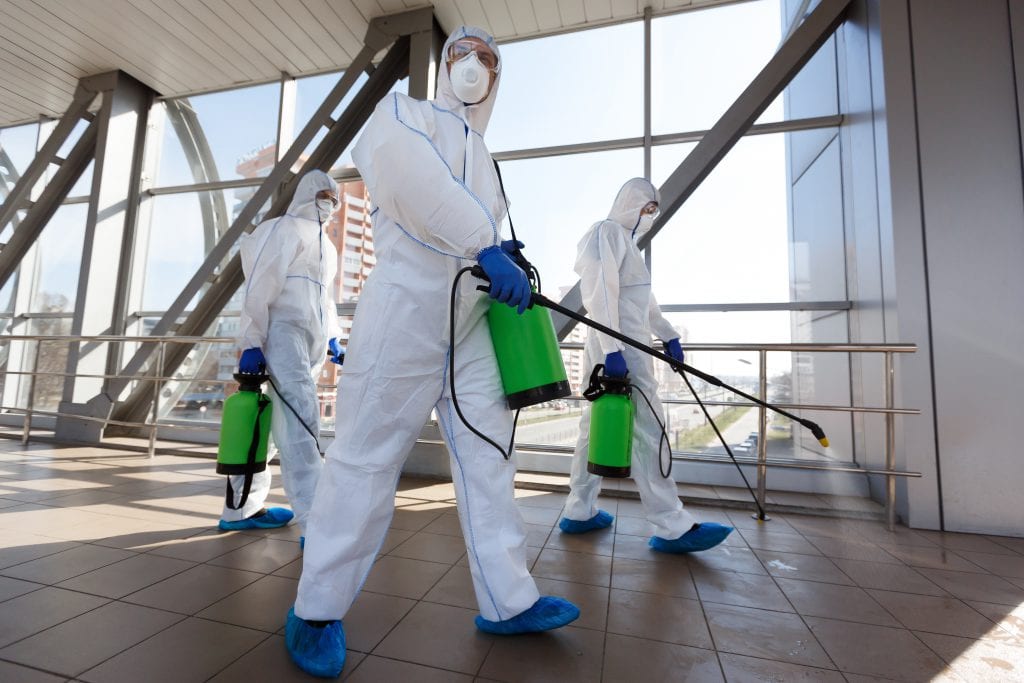

When water infiltrates your home or business, it creates a breeding ground for mold. Mold spores are present everywhere, but they require moisture to activate and proliferate. Within as little as 24-48 hours of water exposure, mold can begin to colonize and spread, posing serious health risks and structural damage if left unchecked.
Impact of Moisture on Building Materials
Materials such as drywall, wood, and insulation absorb water like a sponge. This moisture weakens their integrity, causing warping, swelling, and eventual deterioration if not properly dried and restored.
Timeframe for Mold Growth After Water Damage
Mold growth can start remarkably quickly after water damage occurs. Within days, visible signs may appear, accompanied by musty odors signaling mold's presence even before it becomes visible.
Health Risks Associated with Mold
Exposure to mold can lead to a range of health issues, particularly for those with allergies, asthma, or compromised immune systems. Restoration industry standards Symptoms may include respiratory problems, skin irritation, and in severe cases, chronic lung illnesses.
Vulnerable Populations
Children, elderly individuals, and anyone with existing respiratory conditions are especially susceptible to the effects of mold exposure. It's crucial to address water damage promptly to mitigate health risks.
Identifying Signs of Water Damage
Detecting water damage early can prevent mold growth and costly repairs. Look for both visible and hidden signs throughout your property.
Visible Signs
Stains and Discoloration: Water stains on ceilings or walls indicate leaks or seepage.
Peeling Paint or Wallpaper: Moisture can cause paint and wallpaper to peel away from surfaces.
Hidden Signs
Musty Odors: A persistent, earthy smell could indicate hidden mold growth.
Warped or Buckled Floors: Changes in flooring texture can suggest water damage beneath.
Preventing Water Damage
Taking proactive steps to safeguard your property against water damage is essential for mold prevention.
Regular Inspection and Maintenance
Routine checks of plumbing, appliances, and roofing can catch potential issues before they escalate into significant water damage incidents.
Early Detection Systems
Installing water leak detectors and monitoring systems can provide early warnings of leaks or moisture buildup, allowing for prompt intervention.
Proper Installation and Maintenance of Appliances
Read about the best Environmental Cleaning.Ensuring appliances are correctly installed and regularly maintained reduces the risk of malfunctions leading to water damage.
Steps to Prevent Mold Growth After Water Damage
If water damage occurs, swift action is crucial to prevent mold from taking hold.
Immediate Actions to Take
Drying Out Affected Areas: Use fans and dehumidifiers to dry wet areas promptly.
Removing Water-Damaged Materials: Dispose of irreparably damaged items to prevent mold spread.
Professional Mold Remediation
For extensive or hidden mold growth, professional mold remediation is necessary.
Hiring Certified Professionals
Qualified mold remediation specialists have the expertise and equipment to safely and effectively remove mold from your property.
Importance of Thorough Cleaning and Drying
Complete drying and thorough cleaning of affected areas prevent mold from returning and ensure a healthy indoor environment.
Long-Term Strategies for Mold Prevention
Preventing mold requires ongoing maintenance and attention to moisture control within your home or business.
Improving Ventilation
Proper airflow helps reduce humidity levels, discouraging mold growth in areas prone to moisture buildup.
Controlling Indoor Humidity Levels
Maintaining indoor humidity below 60% inhibits mold growth. Dehumidifiers can help achieve and maintain optimal humidity levels.
Insulating Pipes and Roofs
Insulating vulnerable areas such as pipes and roofs prevents condensation and potential water damage.
Conclusion
Understanding how water damage leads to mold growth is the first step in protecting your property and health. By promptly addressing water issues, implementing preventive measures, and acting swiftly if water damage occurs, you can minimize the risk of mold infestation. Remember, prevention is key to maintaining a safe and healthy indoor environment for you and your loved ones.
Understanding Black Mold: Health Effects and Remediation
Black mold, scientifically known as Stachybotrys chartarum, is a type of toxic mold that can have serious health implications if not addressed promptly and properly. In this comprehensive guide, we will delve into what black mold is, its health effects, methods of identification, remediation techniques, and preventive measures.
Introduction
Black mold is notorious for its dark greenish-black appearance and its association with health risks. Understanding its presence, effects on health, and proper remediation is crucial for maintaining a healthy indoor environment.
What is Black Mold?
Black mold is a type of fungus that thrives in damp, humid environments. It is often found in areas with water damage, such as leaky roofs, basements, and bathrooms. This mold releases spores into the air, which can lead to respiratory issues and other health problems when inhaled.
Health Effects of Black Mold
Exposure to black mold can cause a range of health issues, from mild allergic reactions to severe respiratory problems and even neurological issues in some cases.
Allergic Reactions
Many people experience allergic reactions to black mold spores, leading to symptoms similar to hay fever or asthma exacerbations.
Respiratory Issues
Prolonged exposure can aggravate existing respiratory conditions like asthma, and in severe cases, cause chronic obstructive pulmonary disease (COPD).
Serious Health Risks
Individuals with compromised immune systems, such as the elderly, children, and those with chronic illnesses, are particularly vulnerable to severe health risks from black mold exposure.
Identifying Black Mold
Detecting black mold early is crucial for effective remediation. It typically appears as slimy greenish-black patches and often has a musty, earthy odor.
Conditions Favoring Black Mold Growth
Black mold thrives in environments with high humidity and moisture levels. Poor ventilation, water leaks, and flooding can create ideal conditions for its growth.
Health Risks Associated with Black Mold Exposure
The health risks associated with black mold exposure can vary depending on the duration and intensity of exposure. Immediate symptoms may include headaches, fatigue, and respiratory issues, while long-term exposure can lead to more severe health problems.
Testing for Black Mold
If you suspect black mold in your home, there are several methods for testing its presence. DIY testing kits are available, but for accurate results, it's advisable to hire a professional mold inspector who can conduct thorough testing.
Remediation Techniques
DIY vs. Professional Remediation
Minor mold issues can sometimes be addressed with DIY methods using household cleaners and proper ventilation. However, extensive or persistent mold problems require professional remediation to ensure thorough removal and prevention of recurrence.
Steps Involved in Removing Black Mold
Professional remediation typically involves assessing the extent of mold growth, containing affected areas to prevent spore spread, using specialized equipment for cleaning, and ensuring proper disposal of contaminated materials.
Preventing Black Mold
Preventing black mold begins with controlling moisture levels in your home:
Repair leaks promptly.
Use dehumidifiers in damp areas.
Improve ventilation in bathrooms and kitchens.
Safety Measures During Remediation
During mold remediation, it's essential to prioritize safety:
Wear protective gear such as gloves, goggles, and masks.
Ensure adequate ventilation during cleaning.
Dispose of contaminated materials properly to prevent further spread.
Common Misconceptions About Black Mold
Myth vs. Reality
There are many misconceptions about black mold, including its toxicity levels and the effectiveness of DIY remedies. Understanding the facts can help homeowners make informed decisions about mold remediation.
Legal and Insurance Considerations
Insurance Coverage for Mold Damage
Homeowners' insurance policies may vary in coverage for mold damage, depending on the cause and extent of the damage. It's essential to review your policy and understand your coverage.
Legal Implications of Neglecting Mold Issues
Neglecting black mold issues can lead to legal liabilities, especially in rental properties or when selling a home. Landlords and property owners have a duty to maintain safe living conditions for tenants.
Environmental Impact
Black mold not only poses health risks but can also affect indoor air quality and the structural integrity of buildings. Addressing mold issues promptly can prevent further damage to your property.
Conclusion
In conclusion, black mold is more than just a nuisance; it's a health hazard that requires prompt attention and professional remediation. By understanding its health effects, identifying its presence, and taking proactive measures to prevent and remediate mold growth, homeowners can protect their health and maintain a safe indoor environment. If you suspect black mold in your home, don't hesitate to seek professional assistance to ensure thorough removal and peace of mind.
Mold Remediation for Landlords: Responsibilities and Best Practices
Mold growth in rental properties can be a significant concern for landlords, posing health risks to tenants and potential legal liabilities. As a landlord, understanding your responsibilities and implementing best practices for mold remediation is crucial to maintaining a safe and habitable environment for your tenants.
Introduction
Mold remediation is not just about aesthetics; it's about ensuring the health and well-being of your tenants. HEPA filtration This article explores the essential responsibilities of landlords in addressing mold issues, legal obligations, preventative measures, and best practices for effective mold remediation.
Understanding Mold Growth
What causes mold in rental properties?
Mold thrives in environments with moisture and organic materials. Common causes include water leaks, high humidity levels, poor ventilation, and inadequate maintenance of plumbing and HVAC systems.
Common types of mold found in homes
Identifying mold types such as Aspergillus, Penicillium, and Stachybotrys chartarum (black mold) is crucial. Each type poses varying risks and requires specific remediation approaches.
Legal Obligations for Landlords
Legal framework and regulations regarding mold remediation
Laws vary by state and locality, but landlords generally have a duty to provide habitable living conditions, which includes addressing mold issues promptly.
Responsibilities under landlord-tenant laws
Understanding obligations under lease agreements and local housing codes is essential. Landlords must maintain rental properties in a condition that prevents mold growth and promptly addresses any existing mold problems.
Identifying Mold in Rental Properties
Signs and symptoms of mold growth
Visible mold, musty odors, and tenant complaints of respiratory issues are indicators. Regular inspections and assessments help identify mold early before it becomes a more extensive problem.


Preventative Measures
Strategies to prevent mold growth in rental properties
Implementing proper ventilation, controlling humidity levels, and conducting routine maintenance of plumbing and HVAC systems are effective preventive measures.
Tenant Education and Communication
Importance of educating tenants about mold prevention
Empowering tenants with knowledge about mold prevention practices, such as cleaning spills promptly and reporting leaks promptly, helps mitigate risks.
Establishing open communication channels
Encouraging tenants to report any signs of mold promptly fosters a proactive approach to mold prevention and remediation.
Steps to Take When Mold is Detected
Immediate actions for landlords upon discovering mold
Act swiftly to address the source of moisture, isolate affected areas, and ensure tenant safety by temporarily relocating if necessary.
Engaging professional mold remediation services
Choosing a reputable mold remediation company ensures thorough remediation, compliance with safety standards, and documentation of remediation efforts.
Hiring Professional Mold Remediation Services
Qualities to look for in a reputable mold remediation company
Experience, certifications, adherence to industry standards, and transparency in pricing and procedures are crucial considerations.
Understanding the remediation process and costs involved
Discussing the scope of work, timelines, costs, and potential insurance coverage helps landlords make informed decisions.
Documentation and Legal Protection
Importance of documenting mold remediation efforts
Maintaining records of inspections, remediation plans, communications with tenants, and invoices provides legal protection in case of disputes.
Legal protection against tenant disputes
Adhering to lease agreements, local regulations, and responding promptly to tenant concerns mitigates legal risks associated with mold issues.
Dealing with Tenant Complaints
Handling tenant complaints related to mold effectively
Listening actively to tenant concerns, investigating promptly, and communicating transparently throughout the remediation process builds trust and reduces conflict.
Resolving disputes amicably and legally
Seeking mediation or legal counsel when disputes arise ensures fair resolutions and maintains positive landlord-tenant relationships.
Insurance Coverage for Mold Remediation
Types of insurance coverage available for landlords
Reviewing insurance policies to understand coverage for mold damage, remediation costs, and liability protection helps landlords prepare for potential expenses.
Understanding coverage limits and exclusions
Clarifying what is covered and excluded under insurance policies prevents surprises during mold remediation emergencies.
Case Studies and Examples
Real-life examples of mold remediation challenges and successes
Learning from case studies illustrates effective strategies and lessons learned in managing mold issues in rental properties.
Conclusion
In conclusion, proactive mold prevention, timely remediation, and effective communication with tenants are essential for landlords to fulfill their responsibilities and mitigate risks associated with mold growth. By understanding legal obligations, implementing preventative measures, and engaging professional services when needed, landlords can create safer and healthier living environments for their tenants.
Why DIY Mold Removal Can Be Dangerous
Mold growth in homes is a common issue that many homeowners face, especially in damp or poorly ventilated areas. While the urge to tackle mold problems independently is understandable, DIY mold removal can often lead to more harm than good. In this article, we'll explore why opting for professional mold remediation services is crucial for your health, home, and peace of mind.
Introduction
Mold is a type of fungus that thrives in moist environments and can spread rapidly if not addressed promptly. Allergen control From aesthetic concerns to serious health risks, mold infestations demand swift and effective remediation. In recent years, DIY (Do-It-Yourself) approaches to home maintenance have gained popularity, including DIY mold removal techniques. However, what many homeowners fail to realize is the potential dangers associated with tackling mold issues without professional expertise.
Understanding Mold
Before diving into the risks of DIY mold removal, it's essential to understand the nature of mold itself. Mold spores are microscopic and float in the air, making them easy to inhale and causing various health issues over time. Common types of household molds include black mold (Stachybotrys chartarum), which is notorious for its toxicity, as well as less harmful varieties like Aspergillus and Penicillium.
Risks Associated with Mold Exposure
Exposure to mold can lead to a range of health problems, especially for individuals with respiratory conditions or weakened immune systems. Symptoms may include nasal congestion, coughing, wheezing, throat irritation, and in severe cases, allergic reactions or asthma attacks. Children, elderly individuals, and pets are particularly vulnerable to the adverse effects of mold exposure.
DIY Mold Removal Methods
When faced with mold growth, many homeowners turn to DIY solutions such as bleach, vinegar, or store-bought mold removal products. These methods often involve spraying or scrubbing visible mold patches and may provide temporary relief from surface mold. However, DIY techniques rarely address underlying moisture issues or hidden mold within walls, ceilings, or HVAC systems.

Mold remediation is required when mold growth is visible, when there is a musty odor, or when individuals experience health symptoms such as allergies or respiratory issues. If you suspect mold in your home, it's crucial to contact Moisture Master Pros for an inspection to prevent further health risks and property damage.
Mold remediation entails identifying and addressing the source of moisture that caused the mold growth, containing the affected area, removing mold-contaminated materials, cleaning and treating surfaces, and restoring the area to a healthy condition. Moisture Master Pros follows a comprehensive approach to ensure effective mold removal.
After mold remediation, regular cleaning and maintenance are crucial. Moisture Master Pros recommends using mild, mold-inhibiting cleaners, keeping your home well-ventilated, and promptly addressing any water leaks or moisture issues to prevent mold from returning.
After mold remediation, it's essential to address any moisture issues that contributed to the mold growth to prevent recurrence. Moisture Master Pros recommends regular inspections, maintaining proper ventilation, and addressing leaks or water damage promptly to keep your home mold-free.
Yes, mold remediation is necessary in Philadelphia, PA, to ensure a healthy living environment. Mold can cause significant health problems and structural damage if left untreated. Moisture Master Pros provides professional mold remediation services to protect your home and health.
The duration of mold remediation in Philadelphia, PA, can range from a few hours to several days, depending on the severity of the mold infestation and the size of the area being treated. Moisture Master Pros aims to complete the remediation process efficiently while ensuring thorough mold removal and cleanup.
Mold remediation is the process of identifying, removing, cleaning, and treating mold-infested areas to restore a healthy living environment. At Moisture Master Pros, we use specialized equipment and techniques to ensure thorough and safe mold removal, preventing future mold growth and protecting your health.
Whether you can stay in your home during mold remediation depends on the severity of the mold problem and the extent of the work being done. Moisture Master Pros will advise you based on your specific situation. In many cases, it is safe to remain in your home with certain areas sectioned off.
Mold can return if the underlying moisture problem is not addressed. Moisture Master Pros not only removes the mold but also identifies and fixes the source of moisture to prevent future mold growth.
Mold remediation is highly effective when performed by professionals like Moisture Master Pros. By thoroughly removing mold and addressing the source of moisture, we ensure long-term protection against mold recurrence and safeguard your health and property.